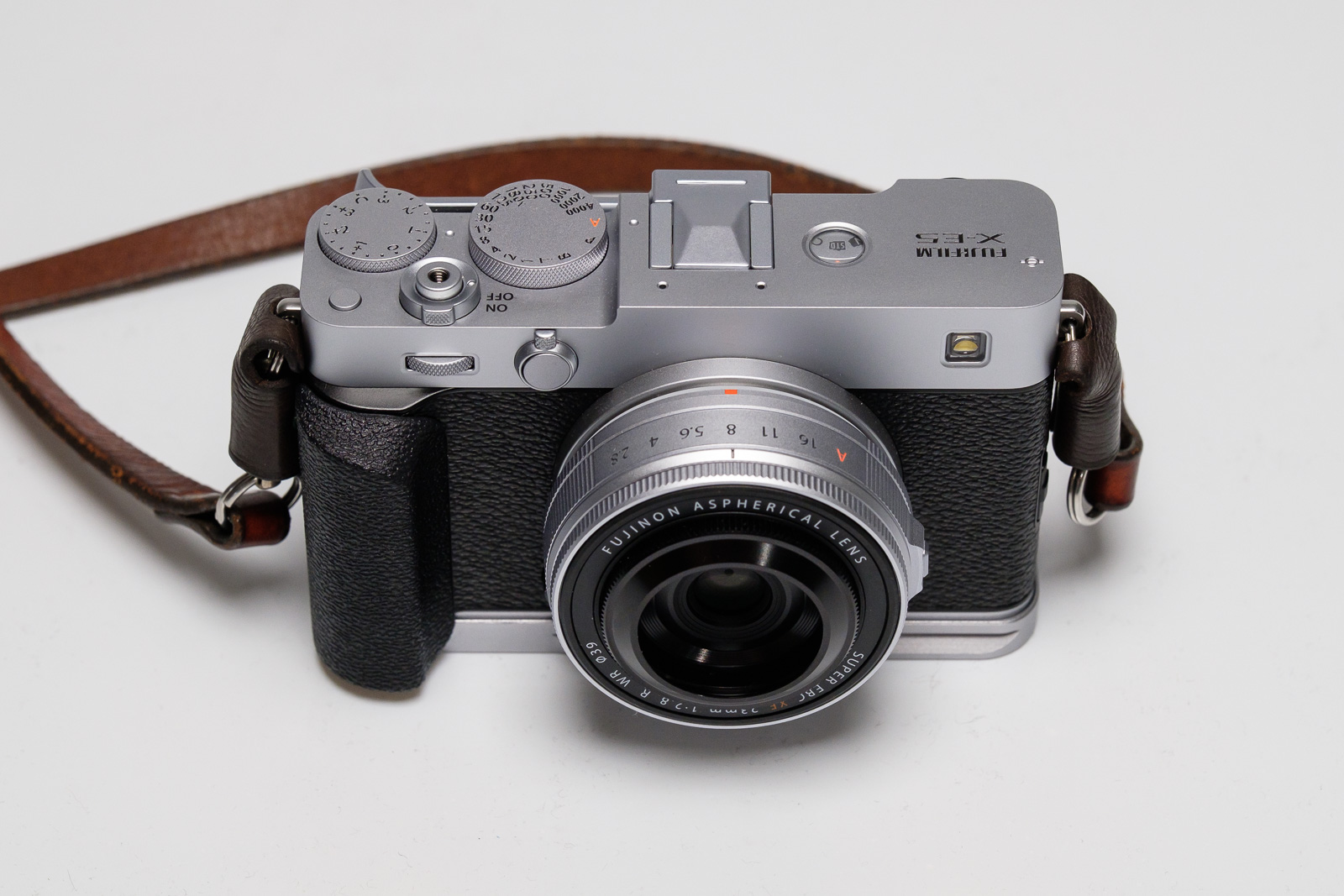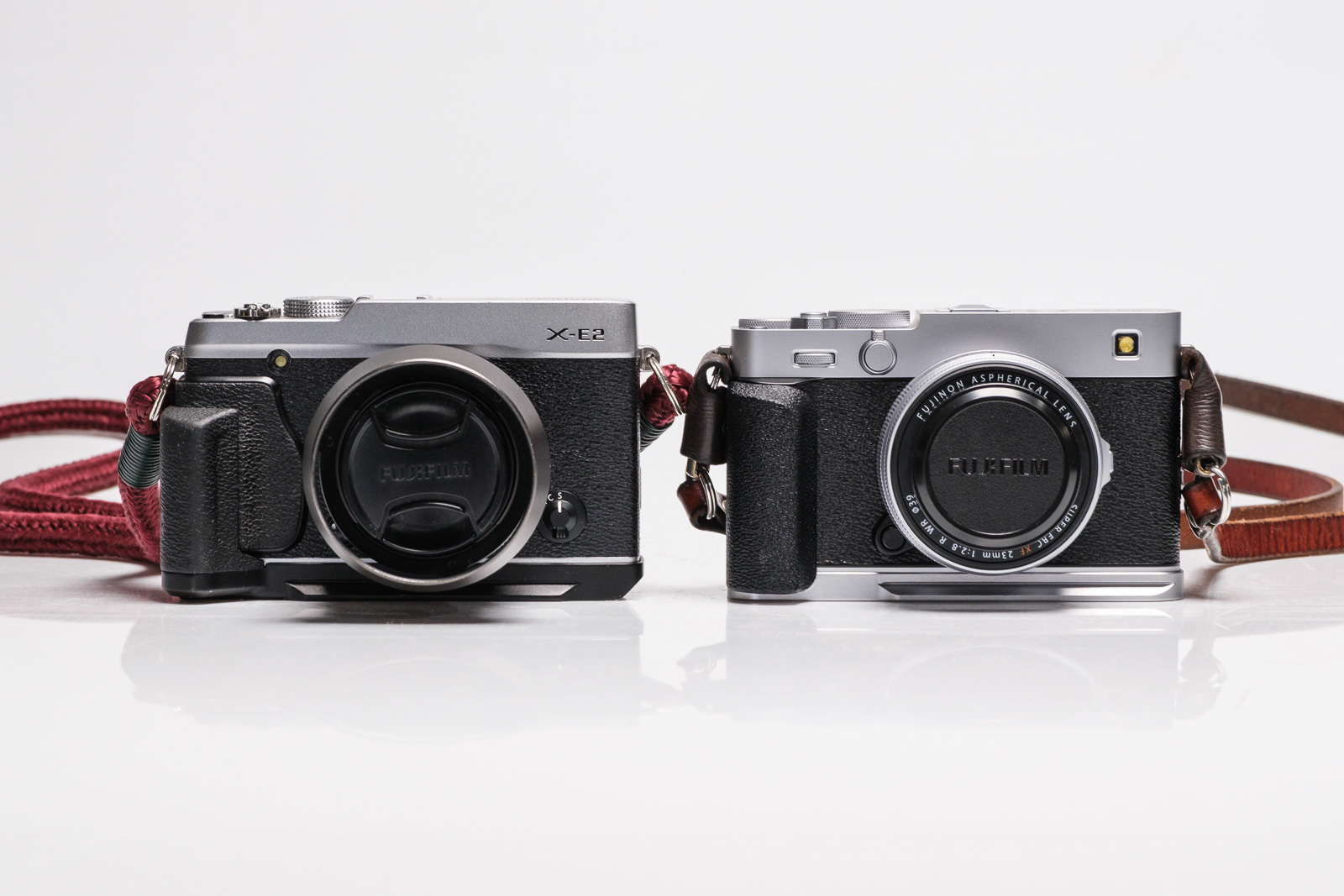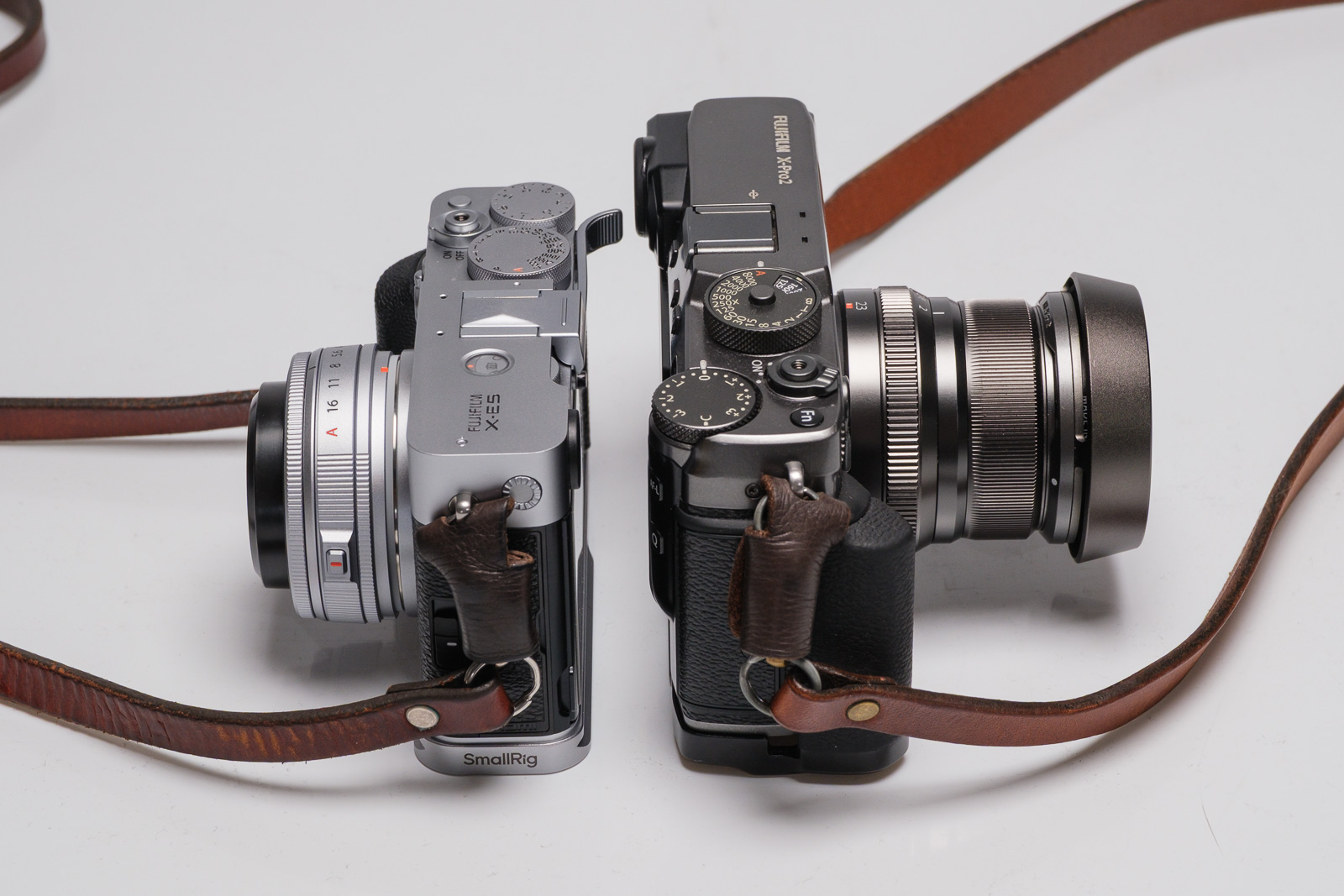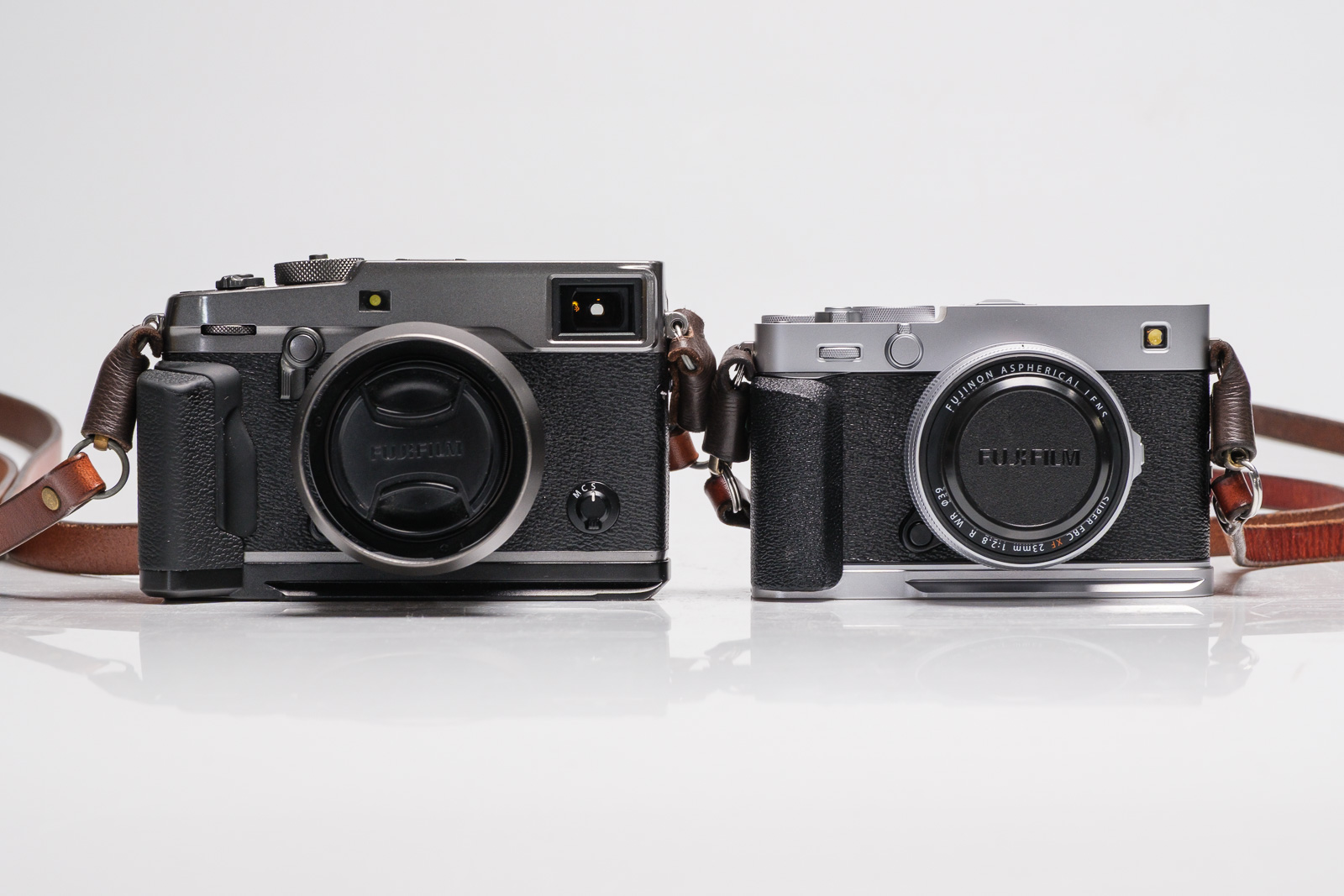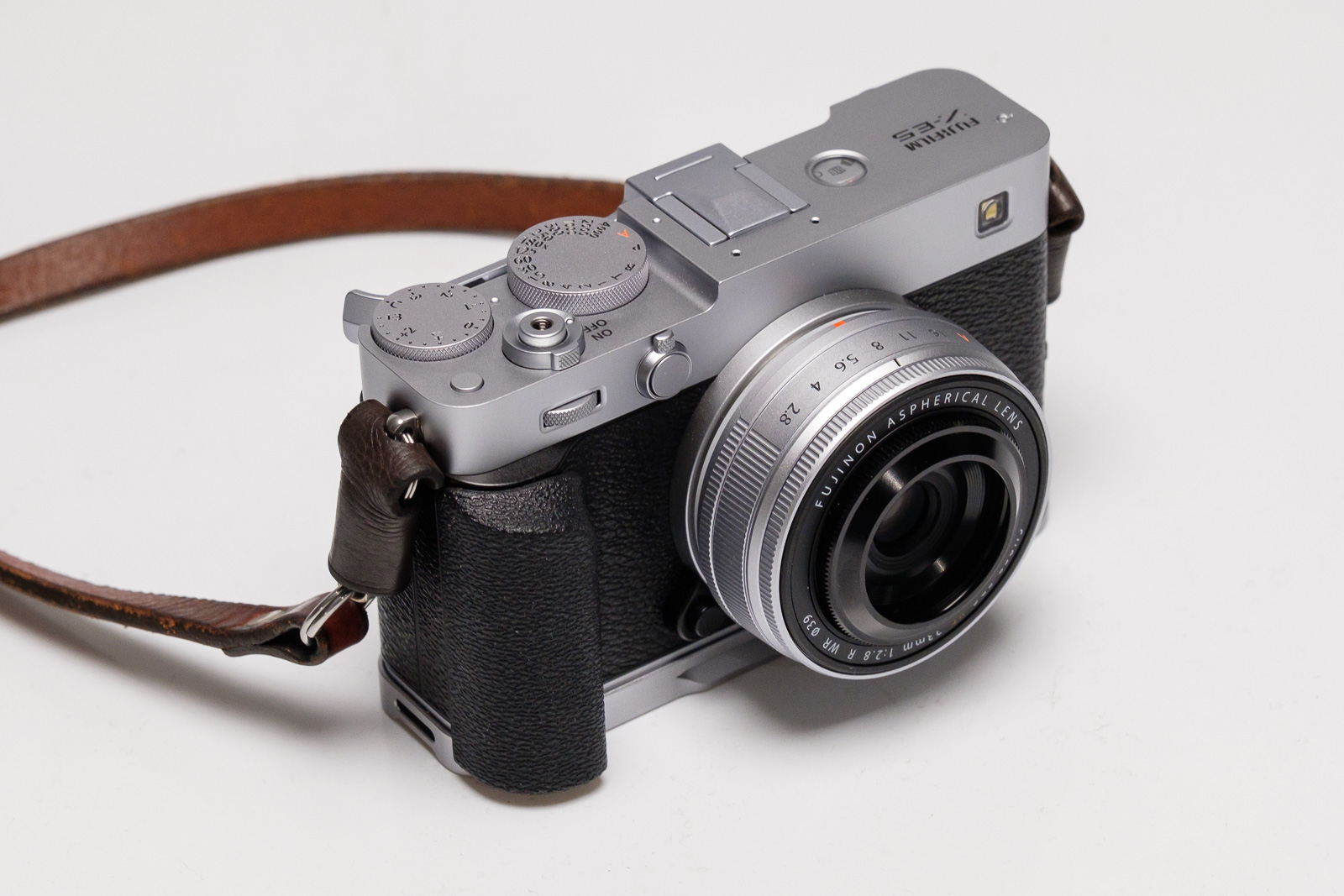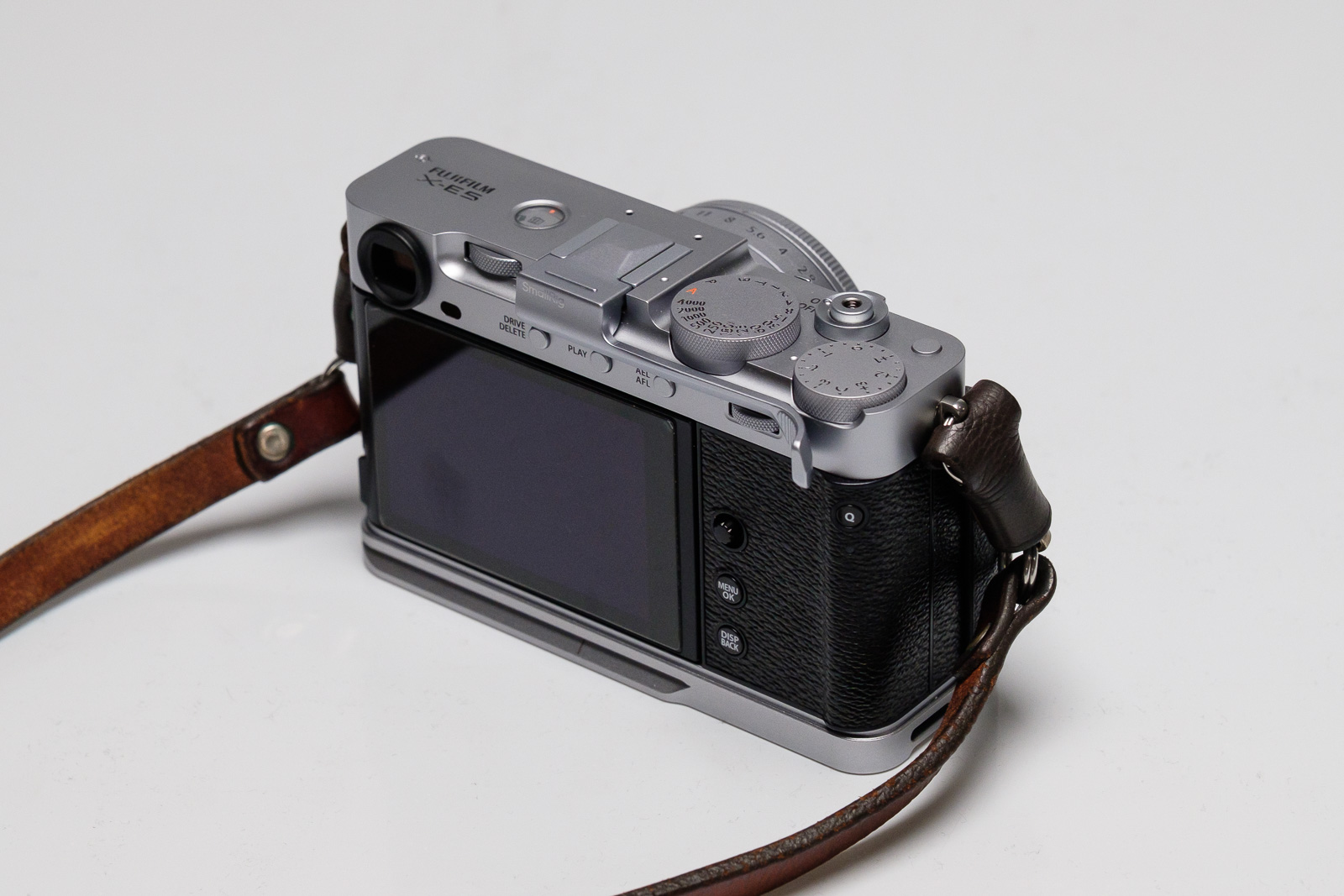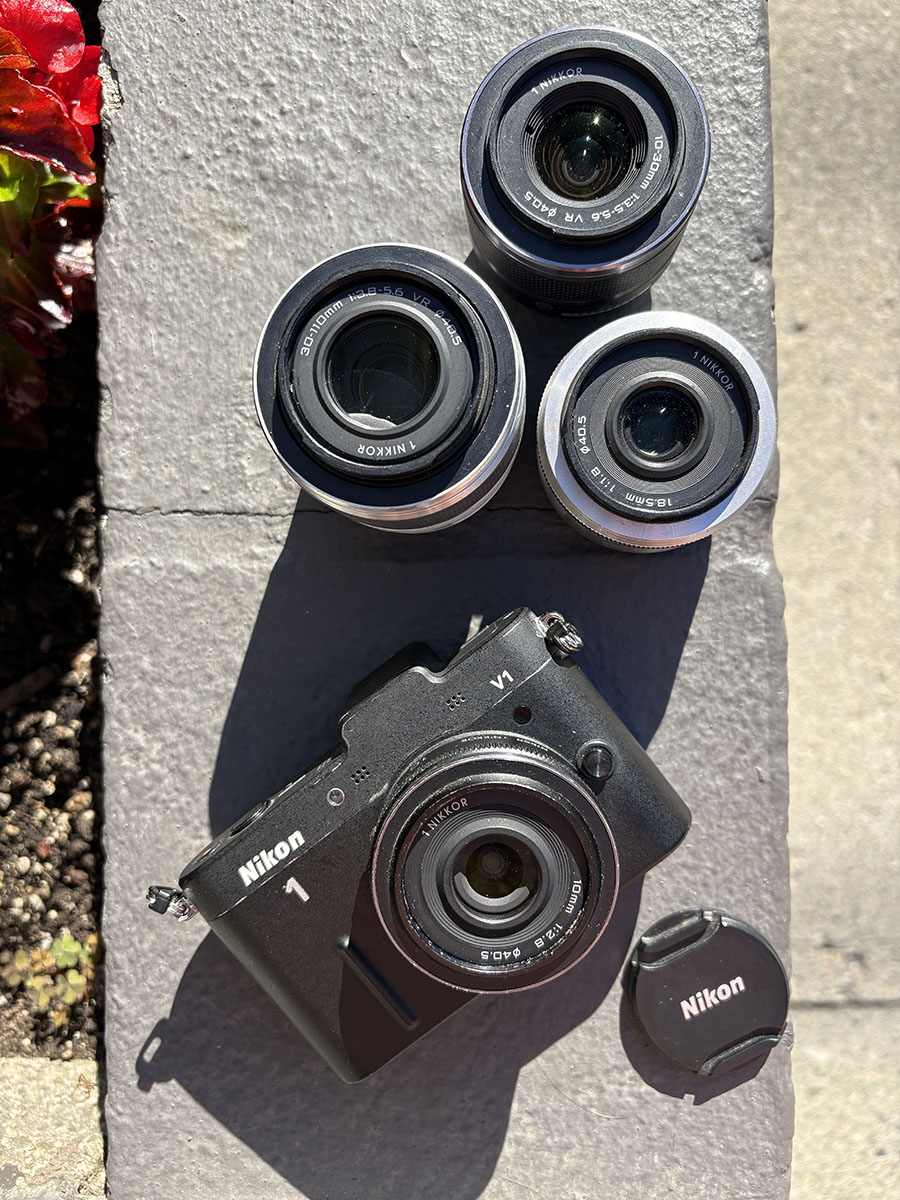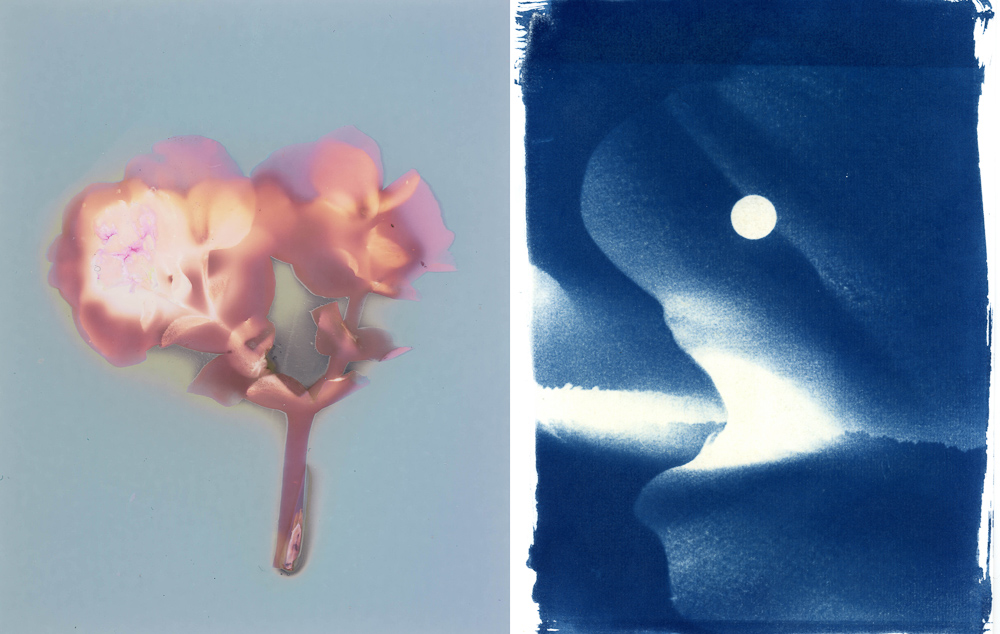The X-E5 is now shipping and I recently took delivery of my very own silver X-E5 kit (I love the classic look of a silver camera) with the compact new 23mm “pancake” lens. Spoiler alert: I love it, and the new lens is very impressive as well! Many of you know how picky I am about lens sharpness and this lens delivers. I was honestly skeptical about the lens, since pancake lenses are often not the best optically, but I thought for the meagre price difference, why not give it a try and I’m sure glad I did!
A gallery with sample images is here: Fujifilm X-E5 Review Samples
While not quite as thin as an actual pancake, even a fluffy buttermilk one, with its diminutive hood attached the new 23mm is still less than half the length of the already compact XF 23mm f/2R WR. Basically the interchangeable lens X-E5 with the new 23mm is just as compact as the fixed lens X100VI, which is quite a feat. At only $90 more than the X100VI, you gain the flexibility of using any of Fujifilm’s many superb lenses, you get a dedicated mechanical film-simulation selection wheel and an EVF that may actually be better than the EVF in the X100VI. However, the X100VI still has some advantages: the advanced optical hybrid viewfinder (switchable from EVF to OVF), a built-in 4 stop ND filter, weather sealing and a faster 23mm f/2 lens. However, depending on how important those features may be to you, you could easily lean either way in your decision. Both are great cameras in their own categories for a very similar price. Note that all but one of the images in the gallery linked to above was taken with the new 23mm pancake, so you’ll have lots of samples to inspect with quite a few wide open at f/2.8 as well.
Note that the images of the X-E5 in this review all feature the SmallRig hand-grip and thumb-grip, detailed further down in the review, which I find to make a definite ergonomic improvement when using larger lenses. You can find plenty of photos online of the bare X-E5 body, including those in our X-E5 product listing. Also in the images is a Burke Mountain leather strap (BML) that I’ve even using since 2015 on several different cameras, going as far back as the original Fujifilm X100. After 10 years, it’s wonderfully soft and supple now. Apart from the high quality leather and overall craftsmanship, the brass Japanese fishing net swivels (rated for a crazy load strength of hundreds of kilograms) that are used at each end of the strap make for a superior experience. You literally have to try a BML strap to understand how much better a leather strap is with those end swivels, versus pretty much all the other straps out there that have simple attachment rings, similar to what you see on the rope strap I have on the X-E2 in the image below. In the comparison photos where you see my X-Pro2, it also has a slightly wider BML strap which has been in use since late 2019. It too has softened up nicely. Now, back on track from the tangent on straps…
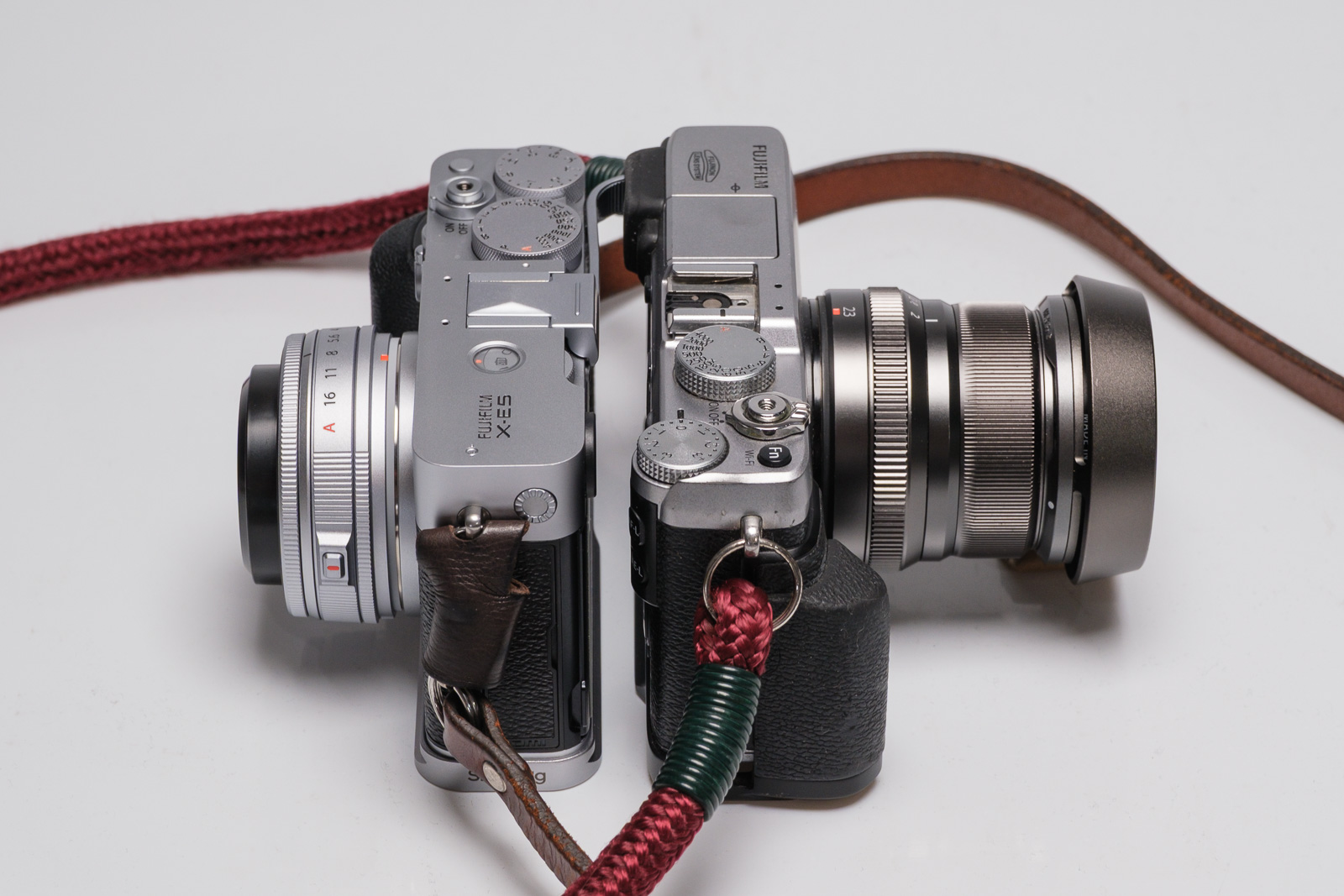
Fujifilm X-E5 + new 23mm f/2.8 pancake versus X-E2 with 23mm f/2, both with their lens hoods and caps attached and extra hand-grips
I won’t go over all the specifications of the X-E5, since I already wrote about all that in our July newsletter, rather I will give you my first impressions on what it is like to use and what I think about the lens. For some perspective, I started with the original X100 to have a compact, high quality walk-around/travel camera, and of course the retro-design was hugely appealing to me since I grew up with rangefinders and film cameras. When the interchangeable lens X-E1 came out, I immediately bought that and started growing my lens collection.
I upgraded to the X-E2 and then finally to the X-Pro2, which has been my main camera since 2016, with an upgrade to the Graphite edition a few years later. The X-E2 (as seen above) has been converted to an infrared camera in the meantime. When the X-E3 was current, my best friend upgraded his X-E1 and then a short time later my wife bought one as well as she became more serious about photography, and those have served them well – they are still using them to this day after five years. I quite liked the X-E3 but of course there was no real reason (other than small size) to get one over my X-Pro2.
The next generation, the X-E4, was a bit of a disappointment with what was, in my opinion, an over simplification of physical controls, and in trying to make the body as sleek as possible I suppose, all front and rear grip elements were smoothed out. For someone like me with relatively big hands, and liking my fast and thus slightly heavier primes, and as someone who loves being able to assign every oft-needed function to a physical button, the X-E4 was of no interest. Plus, the upgrade to a 26MP sensor from the 24MP one in my X-Pro2 was minimal.
When the X-T5 came out, of course I was very interested in that, especially after testing and seeing how astonishingly good the new 40MP sensor was, however I have always preferred rangefinder style cameras, not only for their ease in slipping in and out snug camera bags, but also for having more room to hold them and not having my right cheek jammed up against my right hand, and my nose smushed against the rear LCD. Since I shoot with my right eye, I can also open my left and take in the larger scene, which works much better with a rangefinder style body. So, as superb a camera as the X-T5 is, I never ended up buying one. What I was really waiting for was a new X-Pro body…
Then in mid June of this year, Fujifilm announced the X-E5 and somewhat surprisingly, rather than continuing with what seemed to be the ongoing simplification of the X-E line, it elevated the X-E5 back to a solid semi-pro mid-range status by essentially fixing all the complaints I had with the X-E4. Fujifilm also added the sensor and IBIS that impressed me so much from the X-T5, and even crafted the X-E5 with the lovely machining and finish I had coveted on the X100V and X100VI – nice! As soon as I read the details in the announcement, I was sold. The X-E5 has regained a decent grip on the front, and a small ridge along the back as well, so it feels much better in the hand than the X-E4 did. A rear scroll wheel was added back in, as well as the brilliant mock “self timer” control lever from the X100VI, which can be customized with five functions; a central button push, a tilt left, a tilt right, a tilt-and-hold left and a tilt-and-hold right. One minor complaint is that the tilt-and-hold is a bit slower than it really needs to be, but I am hoping that can be tweaked in a future firmware update. With the 5-way control lever, several customizable buttons plus the clicky rear control wheel, I now have enough customizable tactile buttons and switches to do everything I want quick access to, like I had on the X-Pro2, almost never needing to dive into the camera’s menus.
While the EVF is certainly not as impressive as the ones in the X-T or X-H series of cameras (which have large EVF housing “humps” of course), it is considerably improved over the one in the X-Pro2 or previous X-E bodies, despite seeming a bit underwhelming if just going by its resolution specifications. The EVF is bright and sharp, and even its “auto” brightness mode seems better calibrated than what I remember from previous Fujifilm bodies, so I am very happy with it overall. There is also a cool retro mode, which shows a simplified EVF view with exposure data displayed as old school mock red LED numbers, and depending on how you’ve set your exposure compensation display, will even show under or over exposure with a retro needle display on the right. However, as much as I love retro controls and styling, I am fine with the standard EVF display, thank you very much!
Even though the X-E5’s built-in grip elements are much improved over the nonexistent X-E4 ones, it is still a small, somewhat hard to hold camera, and with a larger lens like my XF 56mm f/1.2 R WR, it does feel a little unbalanced and awkward. Had Fujifilm extended the rear thumb-ridge right to the top of the camera where the exposure compensation dial is, like they did for the X-Pro2, I think it could have been much better. Although Fujifilm no longer makes a hand-grip like they did for previous generation X-E and X-Pro2 bodies, SmallRig has stepped up and offers a really nice one for the X-E5. Like the Fujifilm grips before it, it has an appropriately sized grip, not too big, not too minimal, with a covering that has a nice texture and doesn’t feel like it would ever deteriorate and get “gummy” like rubber can sometimes, after longer period of time. The SmallRig grip also has an Arca-Swiss dovetail along the bottom, just like Fujifilm’s grips did, allowing you to attach the camera to an Arca Swiss equipped tripod head without needing to fiddle with a quick-release plate. Of course you get full, unrestricted battery and memory card access, the small speaker grill at the bottom is not muffled and you have access to the bottom Bluetooth connection button as well – the grip will basically never need to be removed for any reason. We don’t sell SmallRig, but here is a link to their site with X-E5 accessories. Shipping was super fast and I got it in a matter of days. With the grip attached, the camera is far more secure in the hand. Highly recommended! I also ordered the thumb grip from SmallRig and while it is very comfortable and makes the camera even more secure to hold… the jury is still out. It does somewhat block access to the exposure compensation dial, which I do use a lot, so I may end up not using it after all. We shall see if I can get used to pivoting my right hand upward a bit when I want to adjust that dial. However, zero issues with the handgrip – it’s perfect. Well, almost: for some strange reason the little line scribed on the bottom of the hand-grip dovetail lines up with the tripod socket, and not with the centre of the lens, which would have made much more sense to me. However that is an exceedingly minor complaint.
The X-E5 is absolutely gorgeous in my opinion, especially in person. The machining and finish are flawless, crisp and precise. It has a nice heft and all the controls have a very tactile feel. Overall the upgrade in “hand feel” and visual fit & finish is massive when compared to the older X-E cameras, especially the overly light and slippery X-E4.
Of course no camera (or lens) is truly perfect and I do have a few minor nits to pick. The X-E5, like the GFX 100RF, now has multiple aspect ratio modes (albeit not quite as many as the GFX), and you can choose whether to black out the cropped area, make it semi-transparent, or fully transparent with just an outline showing you your actual crop. As with the GFX, raw files brought into Lightroom, as an example, will still allow you to alter the crop in post and even use the full 3:2 aspect ratio frame. That said, inexplicably, the auto-crop in Lightroom seems to have stopped working for me for some weird reason. Not sure if it somehow tied to some other camera settings, or perhaps to some Lightroom processing defaults I have been experimenting with? In any case, I have the push tilt function on the front lever programmed for quick access the aspect ratios. That is all fine and nicely done, but… when you have anything other than the blacked out crop area selected, you can no longer choose to display the retro red LED EVF display, and the camera provides no indication why the display won’t show. There is zero reason to lock out the retro display, as far as I’m concerned at least, and this has confused a number of people already, including your’s truly! it took me a few minutes to figure out why I could longer demonstrate the retro EVF display!
Another nitpick, and all Fujifilm cameras have done this for as long as I can remember, is the fact that when you enter playback mode, the lens first needs to reset to infinity. This has caused issues when checking for critical manual focus with, for example, the first gen 56mm f/1.2 where the selected point of focus is not quite restored accurately enough for an f/1.2 shot. I was using the original 56mm for some tracked astrophotography and was shooting wide open with manual focus. I did a test exposure to check focus (which was perfect), entered playback mode (which reset the lens position) and when I went to do my actual shot, the focus was off. I learned to trust my initial focus setting since things were worse when I tried to confirm it Thankfully that has not been an issue with any other lenses and the new version of the 56mm f/1.2 seems to restore the focus position perfectly, which is the 56mm I am shooting with these days.
What is, however, still an issue is that that the X-E5 is sluggish entering playback mode with the included 23mm lens. The new XF 23mm pancake lens is a bit slow focusing (definitely slower than the 23mm f/2 but likely about the same as the 27mm pancake), but it actually seems disproportionately slow to reset to infinity when the camera is switched to playback or is shut down. There is about two seconds of whirring and shuffling as the lens resets before the camera will enter playback mode, which in practice is actually a frustratingly long delay to me compared to all my other lenses; even the old XF 35mm f/1.4, which is not exactly the swiftest focusing lens, seems much faster. Put any other lens on the X-E5, and it is almost as fast entering playback mode as the X-Pro2 is, but not so with the new 23mm. However, I still don’t feel that its slowness generally diminishes what an overall great lens the new 23mm is… and I feel like that delay could potentially be fixed with a firmware update… maybe? So regardless, I still highly recommend getting the X-E5 kit bundled with the 23mm for the mere $250 increase in price. Speaking of speed and playback mode, one thing that’s a nice upgrade from my older cameras is how fast the X-E5 scrolls a zoomed in image around with the joystick. The X-Pro2 required a bit of patience to scroll from one side of an image to the other, but the X-E5 moves around a zoomed image very swiftly indeed. Of course you also have a touch screen and you can quickly flick-pan a zoomed in image, as well as double-tap to zoom in or out.
Overall the controls, ergonomics and level of customizability is superb on the X-E5, as is the image quality, so if you are looking for a highly capable compact camera body with the latest sensor and tech to go along with Fujifilm’s superb X-system lenses, then the X-E5 is absolutely the one to get! Only the X-M5 is smaller, but there you don’t get an EVF at all, it uses the older 26MP sensor (which is still good admittedly), there is no IBIS, and you have fewer physical control points on the body.
Coming back to the lens for a moment, let me say the corner to corner sharpness really is surprisingly good at all f-stops and there is no obvious field curvature either, unlike Fujifilm’s other pancake, the 27mm f/2.8 (which is still a good lens too). The new 23mm does suffer from a slight bit of barrel distortion, but that is auto-corrected in its JPEG and HEIF format files, and when corrected for on raw files (usually automatically), there seems to be a minimal reduction in corner sharpness. What may be slightly worse, especially in high dynamic range or high ISO scenarios, is the substantial vignetting. Yes, it also gets corrected for automatically, but if you are shooting at wider apertures, the amount of brightening that the corners need is substantial and that can introduce some noise. You can choose not to compensate for vignetting when processing the raw files to avoid this, so it really depends on the shot and on your vision of what it is supposed to look like.
Below is a shot with the new 23mm at f/2.8, handheld at a long 0.6 seconds at ISO 400, brightened substantially in post, and using Lightroom’s advanced denoise feature. It was well after sunset and almost completely dark outside with only ambient city light. Out of camera the image was very dark too, but I knew I could easily make it look good. The fact that one can get such a clean image nowadays with a 40MP APS-C sensor in a very compact camera, handheld with such a slow shutter speed… well I’d say cameras and image processing software have come a long way compared to even 5 years ago! Note that all other images in the gallery linked to at the start of this review were processed in Capture One Pro, and only the shot below was processed using Lightroom…

X-E5 with XF 23mm f/2.8 pancake, ISO 400, 0.6 seconds at f/2.8, handheld. Click to open a much larger version.
Lastly, I have to say that as much as I still love my X-Pro2, its handling and responsiveness, its rugged build, the Hybrid-VF… I think it may finally be time to retire it. It is nice to have the new 40MP sensor and IBIS, plus a tilting rear screen. It is also really nice having an X100-sized camera with a tiny 23mm lens for those times when I want to take something small and unobtrusive, rather than a larger camera bag, yet still be able to use it with any other X-system lens. I think the X-E5 will allow me to shoot with updated tech while waiting for the next X-Pro body to be released, although who knows when that might be? I am honestly not expecting anything until perhaps next year. You may see my Graphite Special Edition X-Pro2 for sale here at Beau in the very near future…
To avoid having to scroll up, here is the sample gallery again: Fujifilm X-E5 Review Samples


